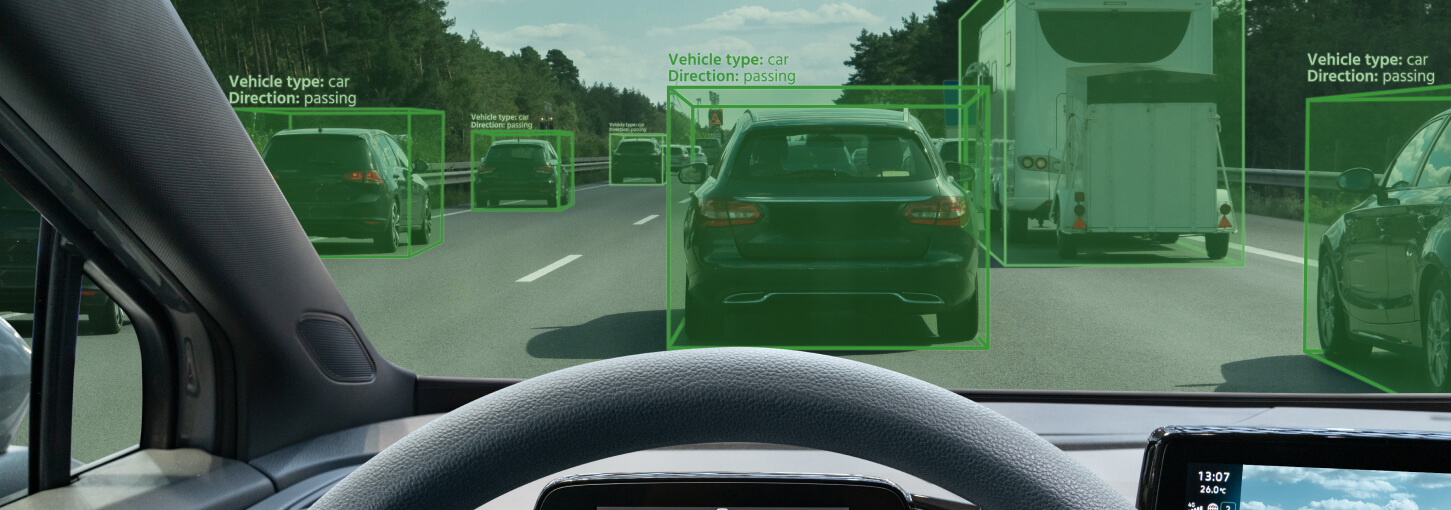
Computer Vision Services
Visionary solutions for your business’s
AI future
As a trusted Human-in-the-Loop service provider for Computer Vision, we offer specialized services in image annotation, video labeling, object detection, semantic segmentation, and bounding box creation. Our solutions include scene recognition, facial recognition, and action classification, enabling AI models to accurately interpret and analyze visual data. We provide high-quality annotations for training deep learning models, improving performance in applications such as autonomous vehicles, medical imaging, and retail analytics. Our expert-driven processes ensure the generation of precise labeled data, empowering computer vision systems to deliver robust and reliable outcomes for various industries.
We are experts in various types of annotation like

Bounding Box

Cuboid

Polygon

Keypoint

Instance Segmentation

Polyline

Semantic segmentation
We cater to these annotation tasks using dedicated annotation platforms like: Dataloop l CVAT (Computer Vision Annotation Tool) l Label Studio l QGIS and other industry-standard tools.
We integrate HITL (Human-in-the-Loop) approaches to refine automated annotations with human precision.
We adhere to strict quality control standards, ensuring annotated data meets project requirements for precision and recall. We maintain the quality assurance with human review, and automated validation using custom scripts and models.
Our areas of expertise
Use cases:
- Robotics
- Autonomous vehicles
- Food harvesting
- Surveillance
- Inventory control
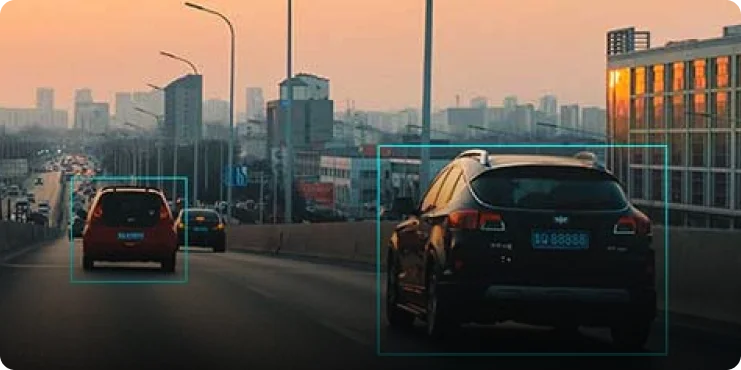
Use cases:
- Shopper behavior
- Surveillance
- Sports analytics
- Traffic control
- Autonomous vehicles
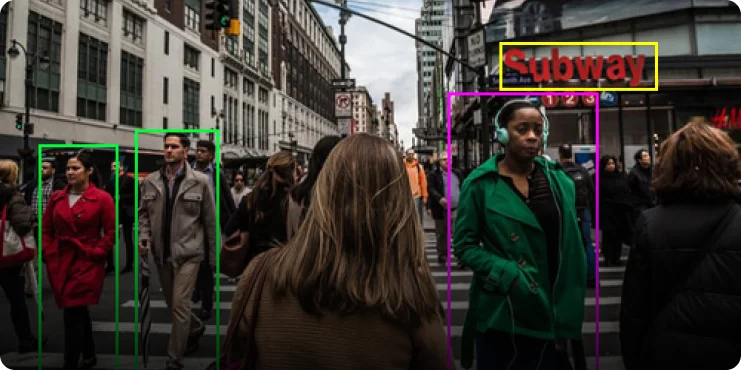
Use cases:
- Visual search
- Product recommendations
- Telemedicine
- Law enforcement
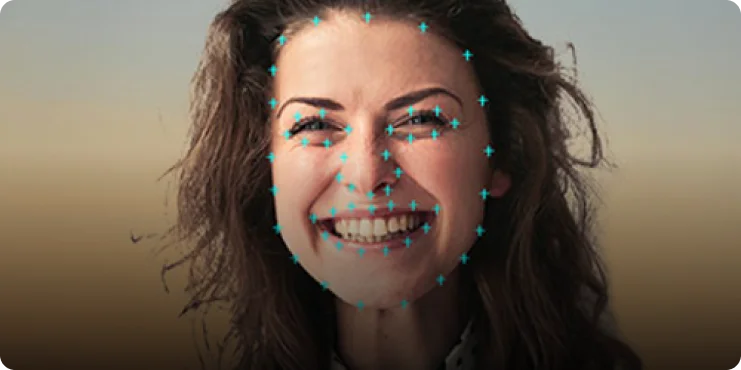
Use cases:
- Autonomous vehicles
- Aerial surveying
- Surveillance
- Robotic navigation
- Law enforcement
- Livestock management
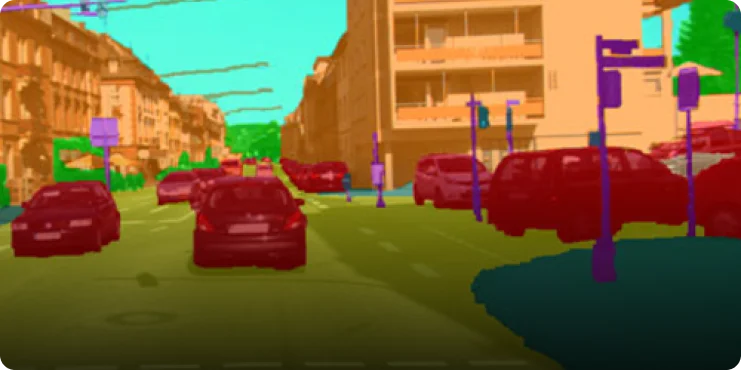
Why choose NextWealth as your
annotation partner
Dedicated Expertise
We specialize in providing scalable annotation services across domains like autonomous vehicles, healthcare, and retail
Client-Focused Delivery
Our collaborative approach ensures the solutions we deliver are customized to meet the specific needs of the project.
Efficiency with Accuracy
Our HITL methodology guarantees results that exceed 98% in Precision and Recall benchmarks
Scalable and Cost-Effective
From POCs to production-level deployments, our robust infrastructure and expert teams deliver results efficiently and economically
Successful client stories and case studies
Deep dive into our journey of partnering with the global business giants.

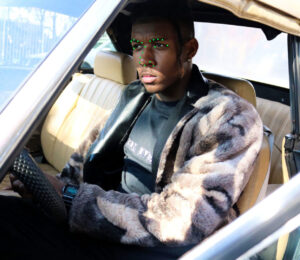
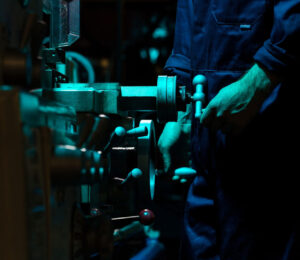
Why partner with us
Our services are tailored to elevate the efficiency of your AI/ML processes
Managed Services l Captive Services l Staffing Services
5,000+
Skilled
Employees
1B+
Data
Transactions
40+
Live Projects
10+
Fortune 500
Clients
73
NPS Score
Testified and trusted by
the best in the world of business
I am really happy at all the great things we have been able to achieve in the past 1 year. The relationship now has a solid foundation, and I am sure NextWealth will continue to be a formidable partner going ahead, bringing a delightful experience for our customers.
NextWealth has been an invaluable partner to us, significantly accelerating our growth by handling critical data operations and providing strategic insights.
NextWealth’s hard work and dedication are truly making a difference, streamlining our processes significantly. We really appreciate it!
My experience with NextWealth has been wonderful. The diligent team consistently delivers on time with a focus on quality. Their innovation-driven mindset fosters a win-win situation for both teams.
I am happy with the improvement in the performance. I have seen positive improvement, and we have a long way to go.
NextWealth’s in-depth analysis helped us pinpoint exactly what needs to be done to address the issues.
With excellence in Quality, Cost, and TAT—key pillars of any operation—NextWealth sets a benchmark for operational efficiency and beyond.
We have experienced significant growth—a success we could not have achieved without the expert support, hard work, and commitment of NextWealth.
Explore Resources
Know how we are accelerating business growth by enabling effectiveness in AI/ML
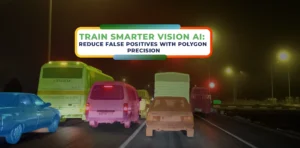
Reducing Computer Vision Errors with Precision: The Role of Polygon Annotation
1 min read
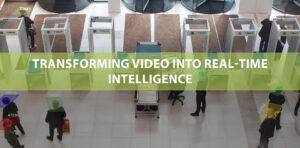
How Video Annotation Transforms Surveillance into Situational Awareness for Real-Time AI
1 min read
Latest Update
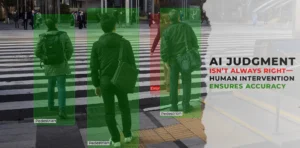
How Human-in-the-Loop Enhances Accuracy in Computer Vision Systems
1 min read
FAQs
Lorem ipsum dolor sit amet consectetur. Nunc pretium et magna leo pellentesque duis.
Lorem ipsum dolor sit amet consectetur. Netus nullam non consequat sit aliquet ullamcorper cursus. Diam egestas eu malesuada imperdiet urna felis morbi dis aliquam. Pharetra amet libero nisi risus arcu blandit a morbi morbi. Lacus nec in venenatis risus. Quam amet faucibus scelerisque eleifend. Pellentesque ornare ultrices aliquet enim urna. Mi consectetur ut maecenas nunc luctus egestas feugiat.
Pellentesque felis tempor volutpat leo luctus egestas ornare. Vulputate bibendum dui vulputate non massa. Quis enim neque arcu eu ac risus est sed.
Lorem ipsum dolor sit amet consectetur. Lacus.
Lorem ipsum dolor sit amet consectetur. Netus nullam non consequat sit aliquet ullamcorper cursus. Diam egestas eu malesuada imperdiet urna felis morbi dis aliquam. Pharetra amet libero nisi risus arcu blandit a morbi morbi. Lacus nec in venenatis risus. Quam amet faucibus scelerisque eleifend. Pellentesque ornare ultrices aliquet enim urna. Mi consectetur ut maecenas nunc luctus egestas feugiat.
Pellentesque felis tempor volutpat leo luctus egestas ornare. Vulputate bibendum dui vulputate non massa. Quis enim neque arcu eu ac risus est sed.
Lorem ipsum dolor sit amet consectetur. Sem purus eget pretium at amet ultrices tempor. Lectus viverra lacinia tristique est id varius est. Risus in duis a congue odio.
Lorem ipsum dolor sit amet consectetur. Netus nullam non consequat sit aliquet ullamcorper cursus. Diam egestas eu malesuada imperdiet urna felis morbi dis aliquam. Pharetra amet libero nisi risus arcu blandit a morbi morbi. Lacus nec in venenatis risus. Quam amet faucibus scelerisque eleifend. Pellentesque ornare ultrices aliquet enim urna. Mi consectetur ut maecenas nunc luctus egestas feugiat.
Pellentesque felis tempor volutpat leo luctus egestas ornare. Vulputate bibendum dui vulputate non massa. Quis enim neque arcu eu ac risus est sed.
Lorem ipsum dolor sit amet consectetur. Neque lorem et enim tempus. Vitae.
Lorem ipsum dolor sit amet consectetur. Netus nullam non consequat sit aliquet ullamcorper cursus. Diam egestas eu malesuada imperdiet urna felis morbi dis aliquam. Pharetra amet libero nisi risus arcu blandit a morbi morbi. Lacus nec in venenatis risus. Quam amet faucibus scelerisque eleifend. Pellentesque ornare ultrices aliquet enim urna. Mi consectetur ut maecenas nunc luctus egestas feugiat.
Pellentesque felis tempor volutpat leo luctus egestas ornare. Vulputate bibendum dui vulputate non massa. Quis enim neque arcu eu ac risus est sed.
